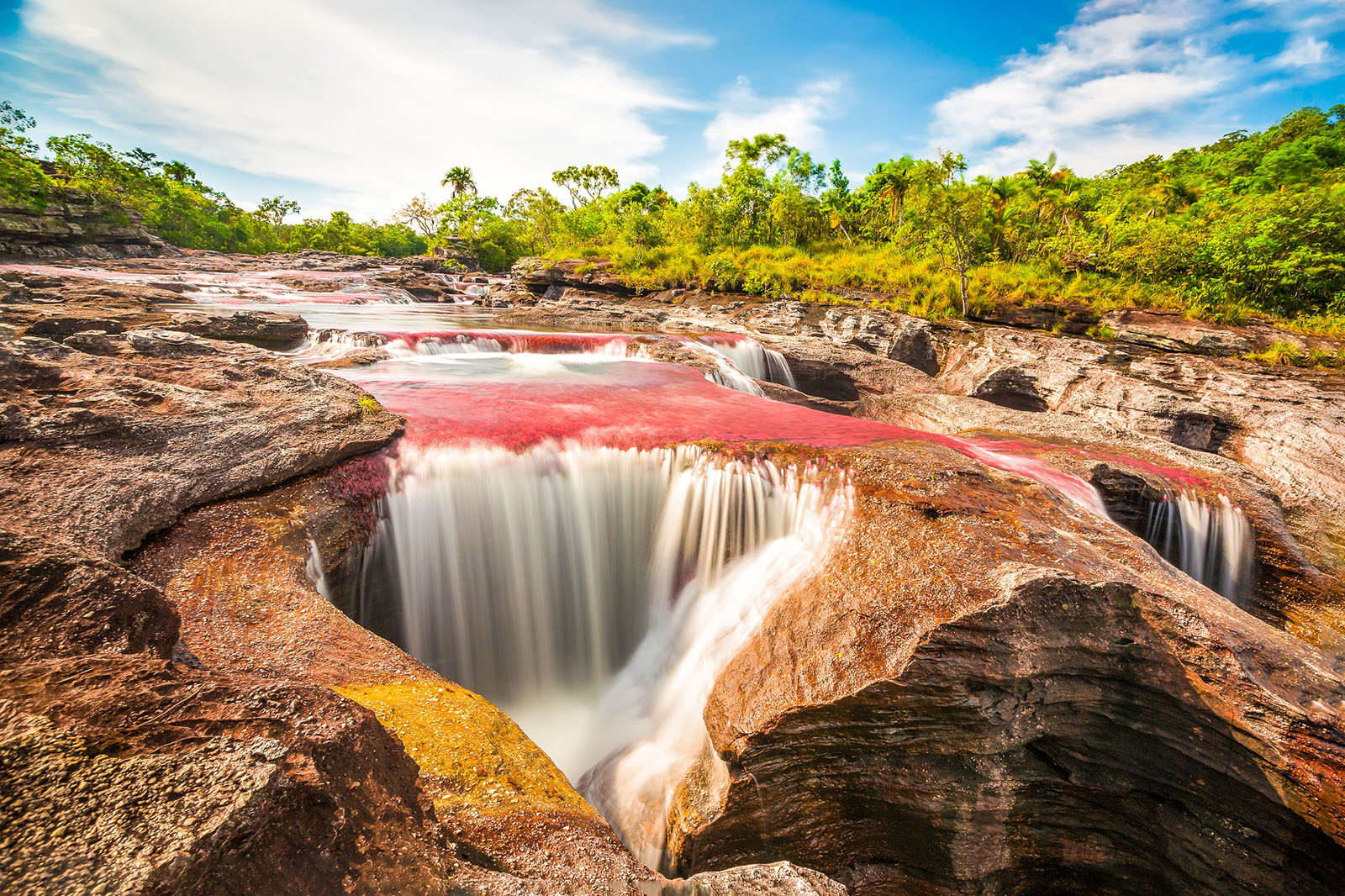Discover
For the majority of the year, Caño Cristales in Colombia looks like any other river: a rock bed covered in moss, with a clear current flowing overhead. In the early summer months through November of each year, an explosion of color occurs, changing this river to what many call a liquid rainbow. This colorful explosion is a result of a unique species of plant that lines the river floor called the Macarenia clavigera. This brilliant red color is offset by bursts of yellow and green sand, blue water, and thousands of shades in between.
During Colombia’s wet season, the river’s water flows too fast and deep, which obscures the bottom of the river and denies the Macarenia clavigera the sun it needs to turn the vibrant red color so loved by visitors. During the dry season, the water recedes and the riverbed does not have enough water to support the stunning colorful wildlife. Though new to travelers, the locals of this Colombian region have known about this river and its glorious colors for generations. Landmarks in and around here have been named by local residents. Piscina Carol or ‘Carol’s Pool’ is one of them, whose name comes from a man who heard that childbirth was less painful in water. He urged his wife to give birth to their daughter Carol in a calm, protected pool, which was downstream from a waterfall.
Caño Cristales is not easily accessible by road.The adventure-seekers after the array of colors can fly into the nearby town of La Macarena. From there, they venture on a short trip to ‘Serrania de la Macarena’, the national park home to Caño Cristales. Since reopening in 2009, guides must be utilized to accessthe river. Many tour agencies will fly visitors in and take them on guided tours but please note that there are restrictions on number of daily visitors, group sizes, cooking, and overnight stays. Sunscreen or insect repellent is banned, especially where swimming is allowed.
For a number of years, Caño Cristales was closed due to guerrilla activity in the region, littering, and unregulated tourist traffic, which called for greater environmental protection rules. Also known as the ‘River of Five Colors’, the water here is extremely clear due to a lack of small particles and nutrients. Plants and animals have had to adapt to the nutrient-poor solid rock surfaces. There are many rapids and waterfalls in this fast-flowing river. The quartzite rocks of the national park were formed about 1.2 billion years ago. This area is neighbored by the Andes, Eastern Llanos and the Amazon Rainforest, all of which offer incredible ecosystems and diversity in flora and fauna.
















